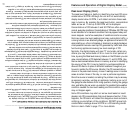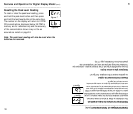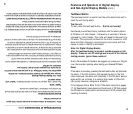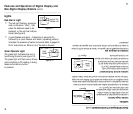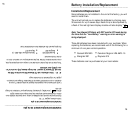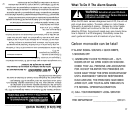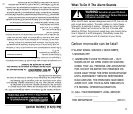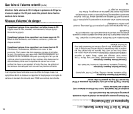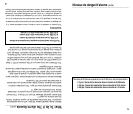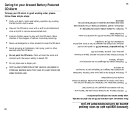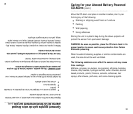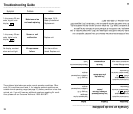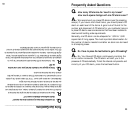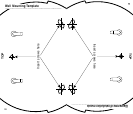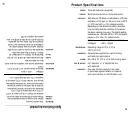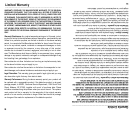
Niveaux de danger/d’alarme (suite)
What To Do If The Alarm Sounds (cont.)
19
19
Cette alarme de CO répond aux exigences de la norme UL 2034 en qui a trait au temps de réaction :
à 70 ppm, l’alarme doit se déclencher dans un intervalle de 60-240minutes
à 150 ppm, l’alarme doit se déclencher dans un intervalle de 10-50 minutes
à 400 ppm, l’alarme doit se déclencher dans un intervalle de 4-15 minutes
This CO alarm meets the alarm response time requirements as follows:
At 70 PPM, the unit must alarm within 60-240 minutes
At 150 PPM, the unit must alarm within 10-50 minutes
At 400 PPM, the unit must alarm within 4-15 minutes
WARNING
This product is intended for use in ordinary indoor residential areas. It is
not designed to measure compliance with commercial and industrial standards.
This device is designed to protect individuals from acute effects of of car-
bon monoxide exposure. It will not fully safeguard individuals with specif-
ic medical conditions. If in doubt, consult a medical practitioner. Individuals
with medical problems may consider using warning devices, which provide
audible and visual signals for carbon monoxide concentrations under 30 ppm.
Medium levels: generally above 100 ppm, with no one experiencing
symptoms. This should be treated as an urgent situation. Follow
the instructions on page 17.
Mid levels: generally between 50 ppm to 100 ppm. This should
be cause for concern and should not be ignored or dismissed.
Follow the instructions on page 17.
Mild levels: generally below 50 ppm. This indicates a need to
watch the situation closely. Kidde recommends you take action
to eliminate the source of CO if possible.
Because carbon monoxide is a cumulative poison, long-term expo-
sures to low levels may cause symptoms, as well as short-term
exposures to high levels. This Kidde unit has a time-weighted
alarm - the higher the level of carbon monoxide present, the sooner
the alarm will be triggered.
This CO alarm can only warn you of the presence of CO. It does
not prevent CO from occurring, nor can it solve an existing CO
problem. If your unit has alarmed and you’ve provided ventila-
tion by leaving your windows and doors open, the CO buildup
may have dissipated by the time help responds. Although your
problem may appear to be temporarily solved, it’s crucial that
the source of the CO is determined and that the appropriate
repairs are made.



